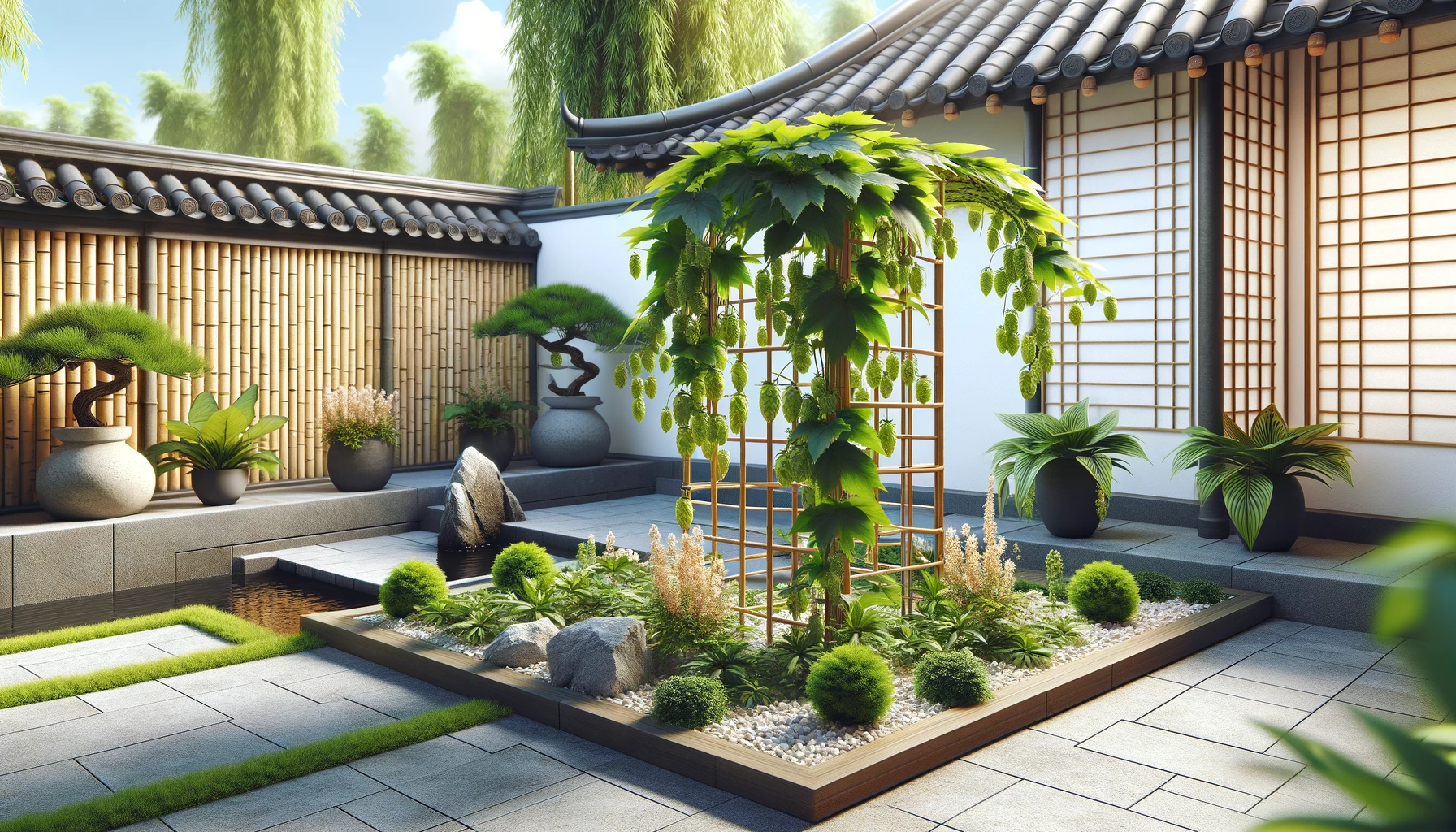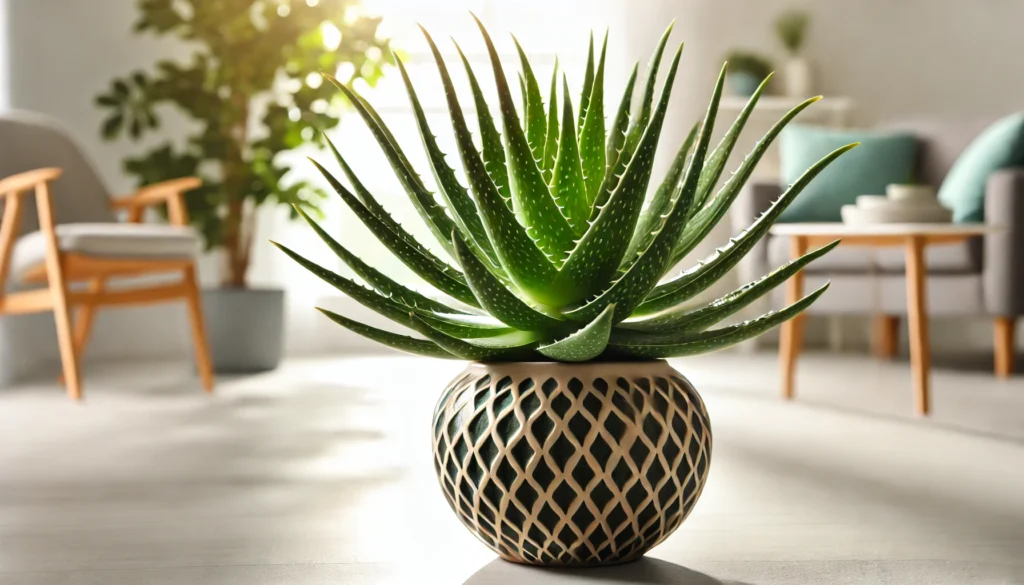
Hops (Humulus lupulus) is a perennial climbing plant renowned for its role in beer production. Its vigorous growth and aromatic flowers make it a popular choice for both gardeners and brewers. Hops can grow up to 25 feet (7.6 meters) tall in a single growing season, using its strong stems to climb trellises, fences, or other structures. With proper care, hops can thrive for many years, adding vertical interest to gardens and providing key ingredients for brewing.
History and Ideal Growing Conditions
Hops have been cultivated for centuries, primarily for their use in brewing beer. The plant is native to Europe, Asia, and North America, where it has been used medicinally and as a preservative. The flowers, or cones, of the hops plant are rich in lupulin, a resinous substance that imparts bitterness, flavor, and aroma to beer.
Hops prefer temperate climates and thrive in USDA hardiness zones 4-8. They require full sun, at least 6-8 hours of direct sunlight per day, and well-drained soil. Hops are heavy feeders, so they appreciate rich, fertile soil with a pH between 6.0 and 7.5. These plants also need a sturdy structure to climb, such as a trellis or fence, as they can grow rapidly during the growing season.
Toxicity and Pets
Hops are toxic to pets, particularly dogs. Ingesting hops can cause malignant hyperthermia, a potentially fatal condition characterized by rapid breathing, increased heart rate, and a high fever. If you have pets, it’s crucial to keep them away from hops plants.
Safe Alternatives
For pet owners, consider alternatives like jasmine (Jasminum spp.) or clematis (Clematis spp.), which are non-toxic to pets and offer similar climbing characteristics.
Best Practices for Caring for Hops
Caring for hops requires attention to their water, soil, and light needs, as well as regular maintenance to keep them healthy and productive.
Watering and Humidity
Hops need consistent moisture, especially during the growing season. Water deeply at least once a week, ensuring the soil remains evenly moist but not waterlogged. During hot or dry weather, you may need to increase watering frequency. Hops do best in moderate humidity levels, but they can tolerate a range of conditions as long as they receive adequate water.
Soil, Light, and Temperature
Plant hops in well-drained, fertile soil enriched with compost or organic matter. They prefer full sun, so choose a location that receives at least 6-8 hours of sunlight daily. Hops are hardy in a wide range of temperatures, with optimal growth occurring between 60°F and 80°F (15°C and 27°C). They can tolerate colder temperatures down to -30°F (-34°C) during dormancy.
Fertilizing
Fertilize hops in early spring with a balanced fertilizer, such as 10-10-10. Hops are heavy feeders, so they may benefit from additional applications of nitrogen-rich fertilizer during the growing season. Avoid over-fertilizing, as this can lead to excessive leaf growth and reduced cone production.
Common Problems and Remedies
Hops are generally hardy, but they can face issues such as downy mildew, aphids, and spider mites. Downy mildew is a fungal disease that affects the leaves and stems, causing yellowing and stunted growth. Treat it with fungicides and improve air circulation by spacing plants appropriately. Aphids and spider mites can be controlled with insecticidal soap or neem oil.
Pruning Hops: Keeping Your Climber in Check
Pruning is essential for managing hops’ vigorous growth and ensuring a good harvest. The best time to prune is in early spring, just as new growth begins.
Tools Needed
Use clean, sharp pruning shears for cutting back stems. Sanitize your tools with 70% isopropyl alcohol before and after use to prevent disease spread.
Identify Areas to Trim
In early spring, cut back the previous year’s growth to about 2-3 feet (0.6-0.9 meters) from the ground. This encourages strong new shoots. During the growing season, trim excess side shoots to direct the plant’s energy into producing larger cones.
Deadheading and Leggy Growth
Deadheading is not necessary for hops, as the cones are the desired harvest. However, if the plant becomes leggy, cut back the weaker stems to promote stronger growth and prevent overcrowding.
Removing Damaged or Diseased Leaves
Regularly inspect the plant for damaged or diseased leaves and remove them promptly. This will help prevent the spread of diseases like downy mildew.
Shaping the Plant
To shape hops, train the strongest bines (main stems) onto a trellis or support structure. Regularly prune side shoots to maintain the desired shape and ensure good air circulation.
Post-Pruning Care
After pruning, apply a layer of mulch around the base of the plant to retain moisture and suppress weeds. Water the plant thoroughly and monitor for any signs of stress, such as wilting or discoloration.
Propagation and Benefits
Hops can be propagated by rhizomes, which are underground stems that produce new shoots. Rhizomes are typically planted in early spring and can be harvested from mature plants. Hops provide numerous benefits, including their use in brewing, their ornamental appeal, and their ability to attract beneficial insects like bees and butterflies.
Final Thoughts
Hops are a dynamic and versatile addition to any garden, offering both ornamental and practical value. With their rapid growth and striking cones, they can quickly transform a vertical space while providing key ingredients for brewing. By following the care guidelines in this article, you can enjoy a healthy and productive hops plant for many years. Whether you’re a homebrewer or a garden enthusiast, hops are sure to impress with their vigor and versatility.



